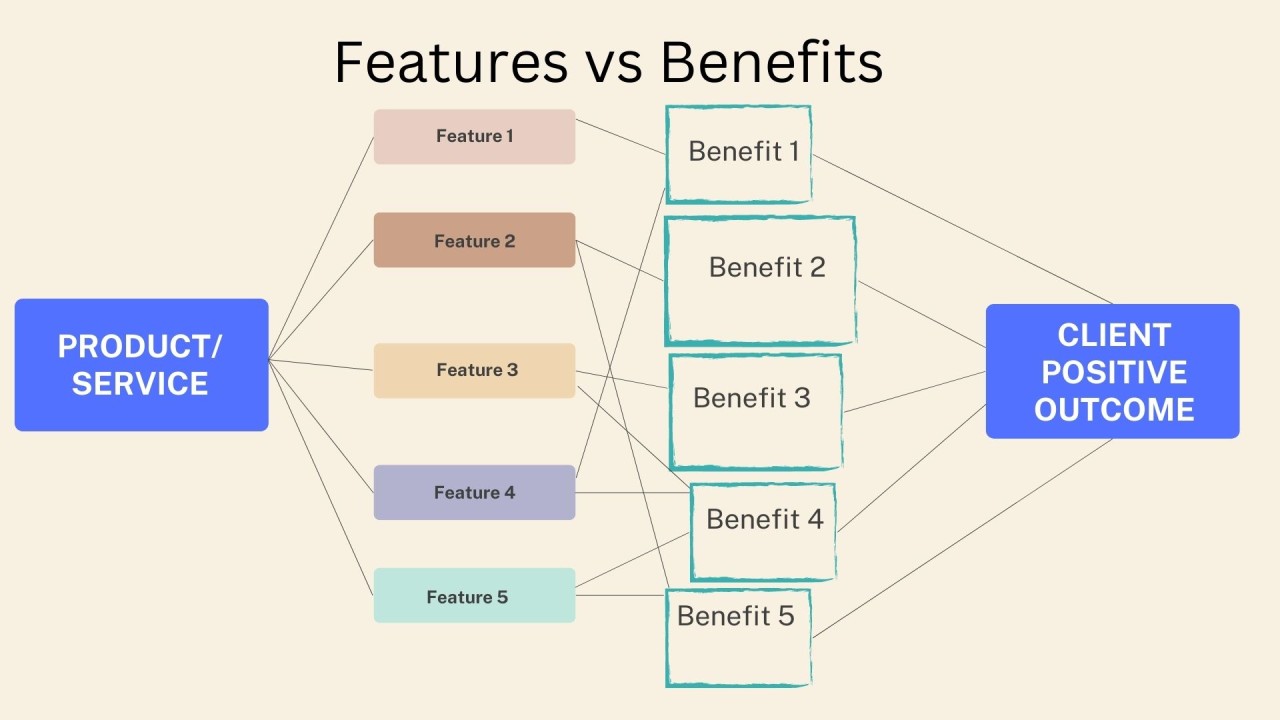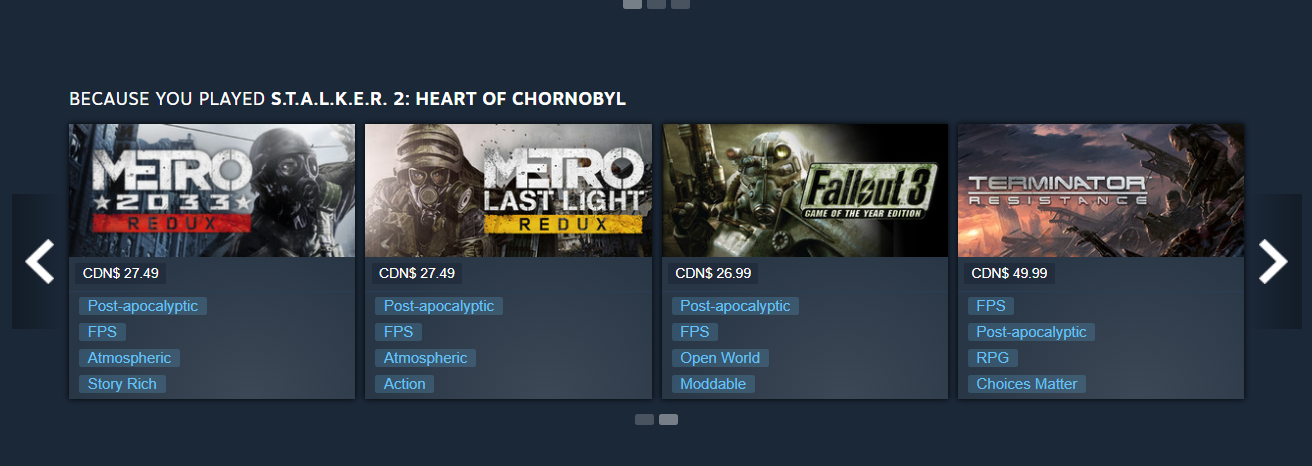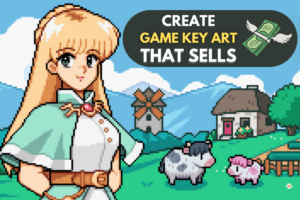Let’s get real. Most game descriptions are boring, uninspired, and absolutely not what players are looking for. If you think slapping together a list of features like “stunning graphics” or “epic gameplay” will do the trick, you are already losing the battle for attention. Players don’t just want a list. They want a reason to care.
Here’s the truth. A killer Steam page isn’t just about features. It is about showing players how those features translate into an actual experience. What’s in it for them? Why should they invest their time, money, and attention into your game instead of the thousands of others out there?
Before diving into the writing process, it’s essential to distinguish between these three levels of communication, each addressing how players perceive your game. This framework is a foundational concept in marketing and branding, and it’s brilliantly described in Butler Branding’s article, Writing Good Copy: Talking Features, Benefits, and Values.

Let me break it down for you so it’s crystal clear:
- Features are the what. These are the raw, technical details of your game. Think of them as the building blocks. They include your mechanics, systems, or unique elements. For example, “a dynamic dialogue system” or “hyper-realistic environments.” They describe what your game has or does.
- Benefits are the so what. This is where you take those features and explain why they matter to the player. What do these features allow players to do? How do they enhance their experience? For instance, that dynamic dialogue system gives players the ability to create unique character interactions that feel personal. The hyper-realistic environments immerse players in a world that feels vivid and alive.
- Value is the why it matters. This is the emotional payoff, the connection that makes your game unforgettable. Why should the player care? What feelings or experiences do they walk away with? That dynamic dialogue system does not just allow for unique interactions. It makes players feel like their choices truly matter. Those hyper-realistic environments evoke awe and transport players into a world where they lose themselves for hours.
If you skip this progression, you are just listing facts. If you follow it, you are showing players why your game is not just worth playing. It is worth feeling something about. This is where the magic happens, and it is the difference between a Steam page that converts and one that gets ignored.
The game MiSide gets it right, offering an example of how features can transform into something players actually give a damn about. Stick around, and I will show you how to do the same!
![]()
![]()
Original Visual Style
Feature: The game uses a colorful anime art style.
Benefit: The bright visuals stand out against the dark and creepy story, making the contrast unique.
Value: The colorful style makes players feel safe at first but then pulls them into something much darker. This creates a surprising emotional experience. I’d tweak this by focusing on how the cheerful visuals make the scary parts hit even harder. For example, “The bright colors bring you into a false sense of safety before the game reveals its unsettling side.”
Interesting Plot
Feature: The game has a storyline full of unexpected twists.
Benefit: Keeps players hooked with surprises and psychological tension.
Value: The story draws players in, making them feel like detectives solving a mystery. I’d make it clearer by showing how each twist keeps players guessing and emotionally involved. For example, “Each twist feels like uncovering a secret, pulling you deeper into the mystery and keeping on edge.”
Original Musical Accompaniment
Feature: The game includes a warm soundtrack that changes to an atmospheric ambient style.
Benefit: The music fits the mood and makes the game more immersive.
Value: The music doesn’t just set the tone; it draws players deeper into the world. I’d improve this by showing how the music feels personal, like it reacts to what’s happening in the game. For example, “The music changes with the story, making every moment feel alive and more emotionally connected to what happens on your screen.”
Unique Characters
Feature: The game includes a variety of characters with different roles.
Benefit: The characters bring surprises, whether they are helping, scaring, or teasing the hero.
Value: This part works perfectly. The unpredictable characters make the game exciting and keep players curious about what will happen next.
![]()
If your game speaks to different types of players, like MiSide, you need to be strategic about how you present it. Hardcore fans who spend time on platforms like Reddit’s r/games, Steam forums, or niche Discord servers want the detailed, in-depth breakdown. For them, it would be relevant for MiSide to highlight their dynamic storyline and psychological tension. Focus on how the narrative offers depth and delivers a unique experience they won’t find anywhere else.
![]()
Casual players, on the other hand, are likely scrolling through Instagram, TikTok, or YouTube looking for something that stands out. For them, simplify the message. Here MiSide might emphasize their vibrant anime visuals that draw players in before revealing the darker, more mysterious undertones. Highlight the emotional journey, the memorable characters, and how the game feels like stepping into their favorite psychological thriller.
And here’s a critical insight to consider. According to Gustavo F. Tondello’s study on Player Characteristics and Video Game Preferences, many players evaluate new games by comparing them to past experiences. Acknowledge those comparisons in your messaging. Show how your game is familiar enough to spark interest but different enough to stand out.

The key here is simple. One-size-fits-all messaging is not enough. You are not just promoting a game; you are offering an experience that resonates differently depending on the audience. Customize your approach, and you’ll create a game that connects with players on every level.
How Visuals, Verbs, and Emotion Transform Game Descriptions
Crafting compelling game descriptions requires more than just listing features; it’s about creating an experience that resonates with players. By integrating visuals, dynamic language, and emotional hooks, developers can transform their Steam pages into engaging showcases. So, how can you highlight your features and make them more appealing?
Bring Features to Life with Visuals
![]()
If you want to grab attention on your Steam page, visuals aren’t optional, they’re essential. Take Panoramal Tales, for example. The game highlights its “Hyper-realistic environments” with animated GIFs, giving players a glimpse into its breathtaking world built with Unreal Engine 5. These GIFs show players exactly what they’re getting without making them sift through walls of text.
Sure, Panoramal Tales is still in development, so not every feature has visuals yet, but what’s already there sets a high standard. It’s a perfect example of how combining strong visuals with feature descriptions can immediately communicate the game’s strengths and leave a lasting impression.
The Power of Verbs in Game Descriptions
![]()
Verbs are the secret sauce that makes game descriptions pop by focusing on what players actually do. Take Pacific Drive as a great example. Its feature “Investigate the Zone” uses action-packed verbs like “investigate,” “find,” “outrun,” and “stomp” to put the spotlight on player actions and create a sense of urgency. Phrases like “Stomp on the gas and outrun it if you can” give a vivid picture of tense, high-stakes gameplay that feels immediate and exciting.
![]()
The description is paired with a screenshot, hinting at the game’s eerie atmosphere and the challenges players will face. But if I created this page, I would add a GIF showing a Zone Storm tearing through the landscape. It would highlight the intensity and show the action in a way that text and static images just can’t match. This is how verbs and visuals work together to make a game feel alive before players even hit play.
Make Players Feel Something with Emotional Hooks
![]()
If your game doesn’t make players feel something, it’s missing the point. Thank Goodness You’re Here gets this right. Instead of just listing features, it invites players into the quirky town of Barnsworth with its strange and funny characters. Words like “funny jokes” and “silly pictures” promise a lot of laughter and joy.
![]()
![]()
![]()
![]()
The colorful art and playful designs do more than look nice. They show off the game’s charm and unique style. This isn’t just about what the game has. It’s about how it makes players feel. That feeling is fun, lighthearted, and unforgettable. This is how you make features stick by tying them to emotions players will enjoy.
If you want players to remember your game, you need to make them feel something. Thank Goodness You’re Here nails this by tying its quirky features to emotions that resonate. The game doesn’t stop at listing what it offers. Iit uses humor to pull players into its whimsical world. The playful visuals and clever details don’t just support the game’s theme as they make the entire experience feel alive and inviting.
Wrapping It Up: Make Players Feel Something
If you want players to care, stop listing features like a checklist. Instead, connect features to benefits and focus on the emotional value. Use visuals that engage, verbs that energize, and descriptions that resonate with players on a personal level.
Tailor your message to fit your audience. Hardcore gamers might want detailed breakdowns, while casual players are drawn to simple, emotional, and visually striking descriptions. The key is to make your game feel like an experience worth their time.
Features alone don’t sell games. Emotional connections do. Make players feel something, and they’ll remember your game long after they leave your page.

